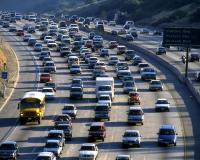
Vibrant Environment
Pollution Control
All | Biodiversity | Climate Change and Sustainability | Environmental Justice | Governance and Rule of Law | Land Use and Natural Resources | Oceans and Coasts | Pollution Control

Last month, the Trump Administration formally ended talks with California over the federal government’s plans to freeze vehicle emissions standards and likely revoke the state’s long-standing authority to set its own standards under the Clean Air Act (CAA). The success of California in mitigating air pollution and reducing greenhouse gas (GHG) emissions under CAA §209—and that of the 15 states that have invoked waivers under §177—is now in question. And the Administration’s plan to end negotiations and move forward with its proposed Safer Affordable Fuel-Efficient Vehicles rule will most certainly lead to a heated, lengthy court battle.

In the late 1970s, revelations about the hazardous waste contaminating sites like Love Canal and Valley of the Drums captured the American public’s attention. In response to concerns about the risk these hazardous dumps posed to both public and environmental health, Congress passed the Comprehensive Environmental Response, Compensation, and Liability Act (CERCLA) in 1980. Commonly referred to as Superfund, CERCLA gives EPA the authority and resources to clean up and remediate sites contaminated by hazardous substances and pollutants.

“In 1969 the signs of . . . concern were everywhere,” writes John Quarles, EPA’s first deputy administrator, in the opening chapter of his invaluable memoir Cleaning Up America. These signs “were manifest in the outcry against the Santa Barbara oil spill,” which happened on January 28, 1969, just eight days after Richard Nixon’s ascent to the White House. There followed in close order a series of epochal events every month of that year. “Suddenly, in cities across the country, citizen environmentalists campaigned. . . . People were demanding a change in the old policy toward the nation’s resources.”

The regulations, guidance documents, and policy memos that implement the Clean Air Act (CAA) have gotten longer and more complicated over the decades. This increased complexity has created greater compliance burdens for the regulated community, and the argument persists that it has stifled economic growth and not produced health benefits that equal or surpass the burdens imposed. Air quality has dramatically improved over the past 40 years, yet many current air quality standards are now at levels approaching the ambient background.
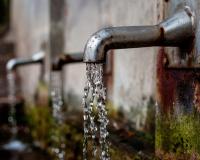
Lead exposure from drinking water is a deeply rooted regulatory, economic, and environmental justice problem in the United States. Tragic stories from Washington, D.C. in the early 2000s, Flint, Michigan in 2014, and most recently in Newark, New Jersey, expose on the national stage the most extreme cases of drinking water contamination. But it is also an everyday reality that falls disproportionately on many low-income and minority communities across the United States.

California is often considered a leader in environmental issues and has made strides to become a more environmentally conscious state. Through state and local policies, the state has banned certain plastic products, such as bags and straws, and in 2011 it implemented a Low Carbon Fuel Standard (LCFS) program to curb greenhouse gas pollution. The California Air Resources Board (CARB) implemented this cap-and-trade program to ensure that automakers gradually increase gas mileage on their vehicles and reduce carbon intensity 10 percent by 2020. The state has even sought to extend the LCFS program, with a new goal of 20 percent reduction by 2030. These standards are stricter than the nationwide fuel standards, and while the initiative has received some legal pushback from the agricultural and ethanol industries, even companies in the transportation sector have become accustomed to California’s standards.
California has enjoyed the ability to tackle its own carbon pollution for several years. Now, however, their fuel standards are in danger.
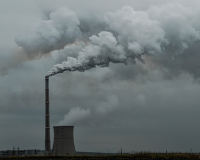
Over 30 years ago, Toxic Wastes and Race in the United States confirmed that race was the primary factor in determining the location of siting toxic wastes. Published by the United Church of Christ, the report’s release set in motion a movement addressing environmental health and social justice now known as environmental justice (EJ). In the decades to follow, EJ became institutionalized in our government agencies with the formation of the Environmental Equity Working Group at EPA in 1990 and Executive Order No. 12898 signed in 1994. Outside of government, the report catalyzed the formation of grassroots groups to address issues of environment health in their communities. The EJ movement also reorients the mainstream definition of environment. It frames the environment as not simply the woods, mountains, and ocean, but as our neighborhoods, our workplaces, and our homes.
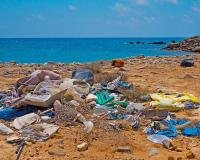
It is hard to ignore the pervasiveness of waste in our daily lives and around the world. Whether it is mounds of garbage piling onto beaches in the Dominican Republic, the enormous amounts of plastic that marine animals accidentally consume, pollution from industries and transportation in our air and water, or daily individual waste, we cannot look past the impacts of generating unnecessary waste.
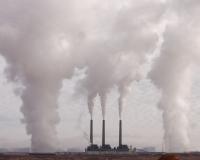
On August 21, EPA introduced its much-anticipated Affordable Clean Energy (ACE) Rule to replace the Barack Obama Administration’s Clean Power Plan (CPP) Rule for regulating carbon dioxide (CO2) emissions from our nation’s aging fleet of power plants. This proposal checks off another item on the Donald Trump Administration’s deregulatory agenda and elicits a number of profound questions. What are the main differences between the ACE and the CPP? What are the implications for public health, the environment, and the electric power sector? More philosophically, why, in the 21st century, do we continue relying on a Victorian-era source of energy to power our cell phones?
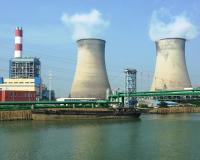
Recent strategies and policies to phase out coal in China have led to an increase in demand for natural gas. In October 2017, China’s Ministry of Environmental Protection unveiled plans to cut harmful air pollution, especially the particularly damaging fine particulate matter known as PM2.5. The plan, or “Coal Ban,” has set strict targets on air quality levels in addition to a ban on burning coal in 28 of its northern cities, including Beijing. However, while the air quality improved significantly in Beijing this past winter, the rapid ban on coal burning and the transition to natural gas has left thousands without heat.